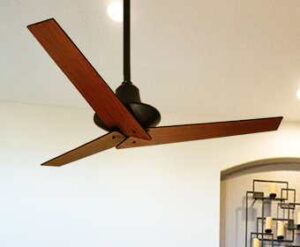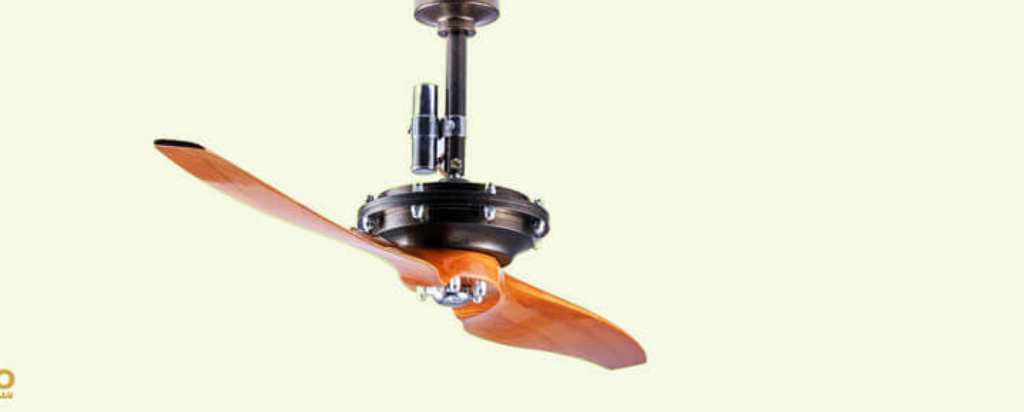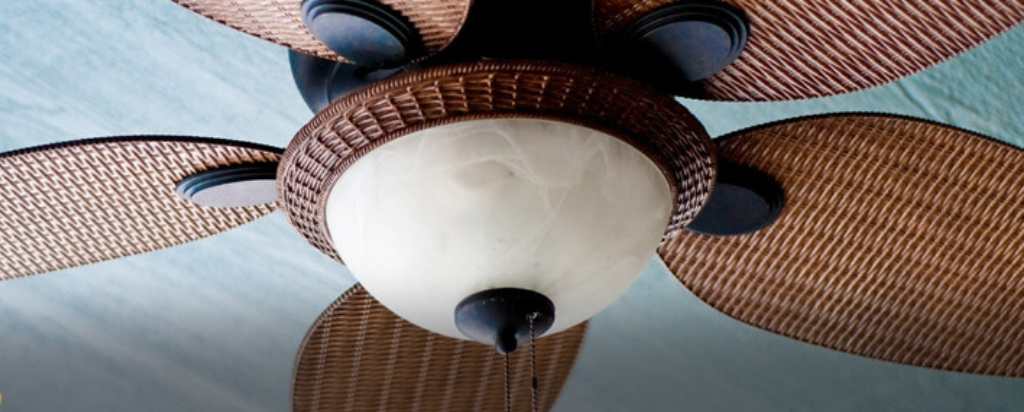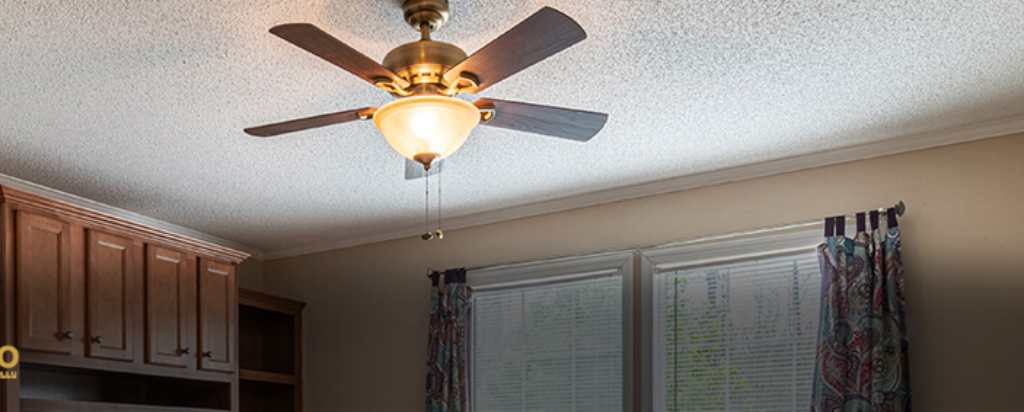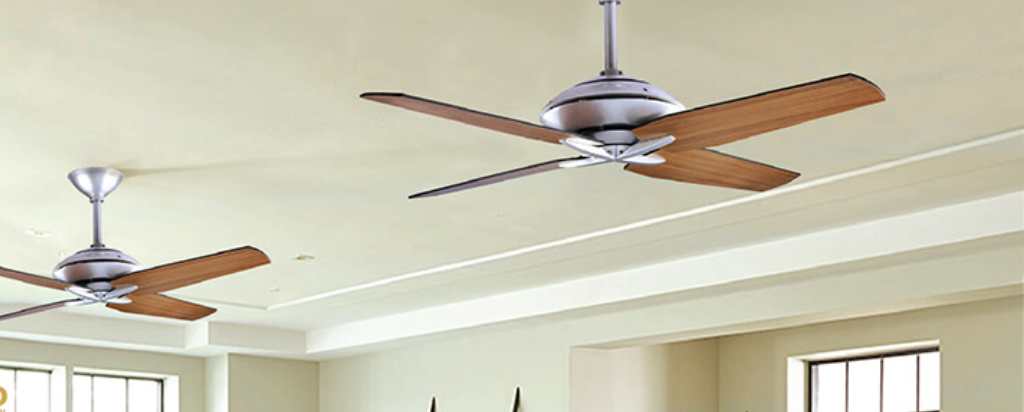It can be difficult to keep your house at a reasonable temperature, especially when you take into account how much heating and cooling costs. Choosing the ideal designer ceiling fans for your house can help you stay warm in the winter and cool in the summer. You must comprehend the operation of the various energy-efficient fan types and how combining your ceiling fan with your air conditioner can reduce energy costs if you want the best results.
Do Fans Use a Lot of Electricity?
A fan consumes far less energy than an air conditioner; tower fans typically consume around 100 watts, while ceiling fans consume between 15 and 90 watts. The greatest towers, ceiling fans, window fans, and whole-house fans only utilise a small portion of the energy that an air conditioner uses. Although fans seem to be among the simplest cooling devices, they only function effectively if you know how to use them. Continue reading for advice on how to run a fan effectively. Using fans properly can help you cut your energy costs.
Energy-efficient ceiling fans
Large fans called ceiling fans to attach to the ceiling and circulate the air in the space by pushing air downward. As a result, there is a “wind chill” effect that offers comfort due to evaporative cooling. Ceiling fans are fixed fixtures that only reduce heat in the space in which they are installed.
How much energy do designer ceiling fans use?
The size of a ceiling fan determines how much energy it consumes. A fan with 36-inch blades consumes about 55 watts. A 48-inch fan typically consumes 75 watts, while a 52-inch fan consumes 90 watts.
Energy Star ceiling fans
Many energy-efficient designer ceiling fans are Energy Star certified and designed to meet the US Environmental Protection Agency’s energy-efficiency guidelines. ENERGY STAR® fans use motors, blade designs, and LED or CFL lighting to reduce the watts consumed when the fan is in use to achieve these goals.
An Energy Star ceiling fan saves up to 60% more energy than non-certified fans. Although they require a higher initial investment, ENERGY STAR® fans are the ideal ceiling fans for anyone looking to reduce their electric bill.
Advantages of ceiling fans
Ceiling fans have a number of advantages:
- They are less expensive than central air conditioning or whole-house fans.
- They are simple to set up.
- They give lighting as well as heat relief (or can be retrofitted with lights).
- They use less energy, especially those with Energy Star certifications.
- They come in a variety of styles and sizes.
- Using your ceiling fan in conjunction with your air conditioner will help you stay cool even if you raise the thermostat on your air conditioner.
Disadvantages of ceiling fans
Ceiling fans do have a few cons:
- Heat relief is only available in the same room as the fan.
- Fans only provide heat relief to individuals, not the entire room.
- When no one is in the room, running the fan wastes electricity.
Energy-efficient whole-house fans
House fans consume more electricity than ceiling fans, which is understandable given their size. Exact energy levels vary depending on the size of the fan’s motor, but according to the National Renewable Energy Laboratory, most whole-house fans utilise between 120 and 600 watts—much less energy than a central air conditioner uses.
How much energy do whole-house fans use?
Given their size, it’s not surprising that house fans use more electricity than ceiling fans. Exact energy amounts vary depending on the size of the fan’s motor, but according to the National Renewable Energy Laboratory, most whole-house fans use between 120 and 600 watts—much less energy than a central air conditioner.
Advantages of whole-house fans
In general, whole-house fans
- provide heat respite around the house
- provide attic ventilation as well as house cooling and
- utilise less energy than central air conditioning
Disadvantages of whole-house fans
On the other hand, whole-house fans
- can be loud
- can reduce the A/C’s efficiency
- Professional installation is required.
- In the winter, tight-fitting vent covers are required; and, in the absence of proper ventilation, can draw in carbon monoxide and other combustion materials from furnaces, water heaters, and gas-powered appliances.
Energy-efficient window fans
Window fans (also known as box fans) are used to move air in and out of a home through open windows. While window fans are commonly used to circulate air in specific rooms, they can also be set up to cool an entire house; some blow hot air out while others suck cool air in.
How much energy do window fans use?
Window fans, like other types of fans, use less power than an air conditioner. Depending on the make and model, most window fans consume between 35 and 100 watts.
Advantages of window fans
There are various advantages to having one or more window fans:
- They cost less than ceiling or house fans.
- They intake fresh air from the outside.
- They are simple to install and remove.
- To keep the house cool, multiple fans can be used.
Disadvantages of window fans
The following are some of the drawbacks of window fans:
- To chill an entire house, many units are required.
- For best efficiency, air cavities around fans must be sealed.
- They are not as appealing as other fan options.
Energy-efficient tower fans
Tower fans are portable vertical fans that are used to improve circulation. A tower fan does not bring in air from outside; rather, it moves air that is already inside the house, relying on wind chill to provide heat relief.
How much energy do tower fans use?
Many tower fan models utilise between 48 and 100 watts of power, depending on the power level. The majority of tower fans have at least three-speed settings.
Advantages of tower fans
Tower fans provide several advantages:
- They are available in a wide range of colours and styles, including bladeless models.
- They are easily moved between rooms.
- They are usually inexpensive.
Disadvantages of tower fans
Tower fans, on the other hand, have a few drawbacks:
- They have a limited air movement range.
- They occupy floor space.
- They can collect dust and dirt.
Smart fans
Smart fans can detect when a room is occupied or turn on and off when it reaches a certain temperature using energy-efficient timers or motion detectors. Smart fans, which can connect to smart-home assistants, are part of the growing wave of home-automation products that can help you save money on energy.
Do smart fans save energy?
According to the US General Services Administration, smart fans may save between 4% and 11% on energy bills. Smart fans conserve energy by altering fan speed in reaction to temperature changes, in addition to turning off at appropriate temperatures and when rooms are vacant.
Advantages of smart fans
Smart fans provide a number of advantages:
- They use very little energy.
- They can be programmed to meet the cooling requirements of your home.
- Phone apps can manage their usage.
- Apps allow you to monitor the temperature and occupancy rates of rooms.
- Smart fans are compatible with smart home devices.
Disadvantages of smart fans
The disadvantages of smart fans are minimal but significant:
- They cost more than most ceiling fans.
- They need extra installation processes (For example, linking apps.)
- How to Operate a Smart Fan
- You can connect smart fans and other smart technology in your home if you have a smart assistant or hub, such as The Fan Studio.
You may utilise home automation technology to switch fans on as you step in the door, or you can connect the fan to your air conditioning or Wi-Fi-enabled thermostat.

